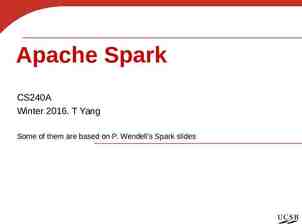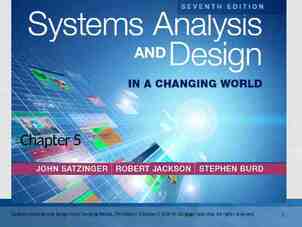Substance Abuse Treatment Ken Martz, Psy.D. CAS Special Assistant to
33 Slides783.16 KB
Substance Abuse Treatment Ken Martz, Psy.D. CAS Special Assistant to the Secretary Pennsylvania Department of Drug and Alcohol Programs 1
Fast Facts Every dollar spent in AOD treatment saves 7 If medical expenses are included that rises to 11 Effective treatment works. Clinically appropriate levels of care work. But what is that? Why care about drug and alcohol treatment? – 1 in 4 people has substance abuse in their families – 1 in 4 people with addiction will die as a result – Most addicted individuals never commit crimes 2
Cost/Benefit In 2007, the cost of illicit drug use alone (Does not include alcohol abuse) totaled more than 193 billion. Direct and indirect costs attributable to illicit drug use are estimated in three principal areas: crime, health, and productivity. Crime: includes three components: criminal justice system costs ( 56,373,254), crime victim costs ( 1,455,555), and other crime costs ( 3,547,885). These subtotal 61,376,694. Health: includes five components: specialty treatment costs ( 3,723,338), hospital and emergency department costs for non-homicide cases ( 5,684,248), hospital and emergency department costs for homicide cases ( 12,938), insurance administration costs ( 544), and other health costs ( 1,995,164). These subtotal 11,416,232. Productivity: includes seven components: labor participation costs ( 49,237,777), specialty treatment costs for services provided at the state level ( 2,828,207), specialty treatment costs for services provided at the federal level ( 44,830), hospitalization costs ( 287,260), incarceration costs ( 48,121,949), premature mortality costs (nonhomicide: 16,005,008), and premature mortality costs (homicide: 3,778,973). These subtotal 120,304,004. Taken together, these costs total 193,096,930, with the majority share attributable to lost productivity. The findings are consistent with prior work that has been done in this area using a generally comparable methodology (Harwood et al., 1984, 1998; ONDCP, 2001, 2004). This report by ONDCP does not include alcohol related costs, which would add to these numbers For Pennsylvania this cost for illicit drug use would be 8,289,740,227 3
Overview of Substance and Drug Use Past-Year Initiates for Specific Illicit Drugs Among Persons Age 12 or Older, 2008 Source: Substance Abuse and Mental Health Services Administration. (2009). Results From the 2008 National Survey on Drug Use and Health: National Findings Rockville, Maryland.
Heroin Related Overdose Deaths in Pennsylvania Heroin Only and Multidrug Toxicity Deaths 1400 1248 1200 1000 Heroin only Heroin and other drugs *Projection based on overdose data through July 728 800 584 600 400 200 324 47 356 272.57 107 159 25 0 2009 2010 2011 2012 2013 (Projected) Based on Pennsylvania Corners Association (PCA) reports in 43 counties, heroin and heroin related deaths have been on the rise for the past 5 years (PCA, 2013) Between 2009 and 2013 there 2,929 heroin related overdose deaths identified by county coroners. Of these, 490 (17%) were heroin only, while 2,439 (83%) involved multiple drugs. Other drugs commonly found along with heroin overdose include – Other opiates: Methadone, Oxycodone, Fentanyl, Morphine, Codeine, Tramadol – Other Illegal drugs: Marijuana, cocaine – Other sedating drugs: Alcohol, benzodiazapines
FDA Warning Labels In September 2013 the FDA updated the warning labels on long acting opioid products. – The new labeling adds: "Because of the risks of addiction, abuse and misuse with opioids, even at recommended doses, and because of the greater risks of overdose and death with extended-release opioid formulations, reserve [Trade name] for use in patients for whom alternative treatment options (e.g., non-opioid analgesics or immediate-release opioids) are ineffective, not tolerated, or would be otherwise inadequate to provide sufficient management of pain." 6
Progression of a Disease and Recovery No n io ct di ad Prevention (Relapse)Prevention te La rly Ea Outpatient Treatment n io ct di Ad Re ry Give to others e v Optimism co Regain job Face problems d Honesty id M More relaxed Relationships improve y Begin to develop trust er v Resolve legal issues o c Self respect returning Re y Connect with sponsor/ rl a positive peer group E Self examination Medical stabilization Thinking begins to clear Late Addiction Desire for help “Rock Bottom”, Arrests le Intensive Treatment id M No drinking Social drinking Drinking feels good Drink to relax Drink to escape Withdrawal from friends First DUI Conflict in relationships Missed time from work Regular drinking Amount of drinking increases Drink to stop feeling bad Disciplinary action at work Association with negative peer group Antisocial beliefs justify behaviors Increasing health complications Relationship isolation/ alienation ry e ov c Re dl e d Ad n tio ic Divorce, Loss of Job Depression, Hopelessness, Suicide, Death 7
Biology Example of 2 Brain pathways Urge to Use Decision to Use Get Money (may be illegally) Go to dealer Decision not to Drink Engage in Abstinence Behavior, eg call sponsor Recovery Behavior, eg go to work, be honest, manage family etc Use, Use, Use Drug wears off, crash Late Stage Recovery Behavior 8
Biology Example of 2 Brain pathways Urge to Use Prison Decision to use Decision not to use Get Money Engage in Abstinence Behavior, eg. call sponsor Go to dealer Recovery Behavior eg. go to work, be honest, manage family etc Use Late Stage Recovery Behavior Drug wears off, crash 9
Recovery Heals the Brain Normal healthy view. Top down surface view. Full, symmetrical activity During substance abuse One year drug and alcohol free ice the overall holes and shriveled appearance during abuse d marked improvement with abstinence. 10
Which Brain do You Want? Normal healthy view. Top down surface view. Full, symmetrical activity Effects of other substances: Long term alcohol abuse 57 y/o 30 years marijuana abuse (underside view) 39 y/o – 25 years frequent heroin use 40 y/o, 7 years on methadone. Heroin 10 years prior. 11
Why does one become addicted? Causes Solutions Biology Genes, Biochemistry, Brains, Autopilot Learning Medication, Meditation Exercise, Diet, Sleep, Stress Management Decisional Actions Relationships with Others Peer Pressure, Family, “Enabling”, Isolation, Lies Limit Setting, Relationship Building, Honesty, Clear Communication Family/Couples Therapy Positive Peer Pressure Relationship with Self Shame, Guilt, Negative Beliefs, “Hate Self” Forgive Self, Gratitude Practice Engage in Healthy Behaviors Today Healthy Coping Skills Training Relationship with Higher Power Lack of Connection with Personal Values, Anger/Shame with God Define Values, Live by Personal Values Pray, Meditate, Other Spiritual Practice 12
What Works? What Works? Key Issues: Therapeutic dose issues – – – Quality issues – – – – – – Level of care Length of stay Continuum Evidence based practices Behavioral practice Cognitive restructuring Emotion/coping Trauma Monitoring/ case management/Advocacy Comprehensive care elements – – – Recovery supports/12-step Employment Housing 13
PCPC Importance of Level of Care – Under treating can lead to treatment resistance or increased progression of the disease What happens if you take a half dose of antibiotic? What happens if you take a half dose of insulin? What happens if you take a half dose of treatment? – Answer: It doesn’t work Individuals get sicker Individuals and providers “give up” believing that there is no hope 14
What the Treatment Research Indicates 15
Treatment Benefits Ettner, et al., 2006
Villanova Study (1995) Evaluated the implementation of Act 152 This study found: – Average LOS for 3C was 90 days (1995) – The study found that those completing treatment had: Lower rates of recidivism Lower utilization of medical services More likely to obtain employment More likely to have higher paying employment – This proper care is the way to move high cost utilizers off of Medicaid and into private insurance – Establishing ongoing recovery is the best cost saver – Better outcomes were found with: Longer lengths of stay More complete continuum of care – Compare with current Average LOS for 3C is 47 days (2011)
Length of Stay Studies consistently find length of stay as the primary predictor of outcomes, along with intensity of treatment and continuum of care. Days in Treatment Source: Greenfield et al, (2004). Effectiveness of Long Term Residential Treatment for Women: Findings from 3 National Studies Percentage of Clients with New Convictions NEW CONVICTIONS BY LENGTH OF STAY 35 % 35% 30% 25% 25% 20% 27% 12% 15% 10% 5% 0% More than 179 Number of Days in Treatment Between 90 and 179 Less than 90 Control Source: Zhang (2002). Does retention matter? Treatment duration and improvement in drug use. (4,005 clients) Source: Pennsylvania Department of Corrections (1997) Pennsylvania FIR Evaluation 18
Length Of Stay Studies consistently find length of stay as the primary predictor of outcomes, along with intensity of treatment and continuum of care. Improvements in criminal recidivism and relapse rates are correlated to length of treatment, with highest rates of improvement among those with 9 months of treatment, and reduced effectiveness for treatment of less than 90 days (NIDA, 2002) Highest improvements were found in long term treatment with least improvement found in methadone maintenance (Friedmann et al, 2004) Lengths of stay are the number one predictor of outcomes for treatment (President’s Commission on Model State Drug Laws, 1993) Average length of stay for Medicaid clients was 90 days (Villanova Study, 1995). Best outcomes were found for longer lengths of stay and more complete continuum of care, measured as lack of criminal recidivism, abstinence, employment and higher paying jobs. No benefit was found for treatment less than 90 days. Currently, average length of stay in treatment for long term residential is 47 days (DPW, 2011) Length of stay has a direct linear relationship with improved outcomes (Toumbourou, 1998) Found residential treatment of 90 days and continuum of care to yield 78% abstinence rates for 5 years. (DuPont, et al. 2009) 19
Pennsylvania Success Story Restrictive Intermediate Punishment Program (RIP, 2014) Current Alternative Sentencing Option for Level 3 & 4 Offenders Places Offenders in Treatment Based on Need 79% Overall Successful Program Completion Rate 93% Successful Outcomes for DUI Offenders 66% Successful Outcomes for Drug Offenders 13.7% Recidivism Rate for Successful Completions at 1 year DOC 1 Year Recidivism 25.9% At 18 months Program Recidivism has flattened; DOC continues to trend up 20
Treatment Works: But what is treatment? Treat addresses a wide range of clinical issues that cause and exacerbate risks of substance abuse. These include the needs for habilitation and rehabilitation, including vocational supports, addressing trauma, learning coping skills, learning relapse prevention skills, improving relationships etc. This is not to be confused with supporting services such as detoxification, medications, peer supports, 12-step programs, housing and other similar approaches which complement the core treatment program. 21
What is a Therapeutic Community? What were they doing that worked? 22
What is a Therapeutic Community? What it is: – High accountability – Behavioral practice and feedback – Correction of criminogenic beliefs and thinking patterns – Tools in practicing effective management of negative emotions Although the TC has many elements, a defining principle is the use of Community as Method 23
Treatment Goals Addiction Abstinence Recovery Chemical addiction Withdrawal “Addiction” to recovery behaviors Dysfunctional relationships Tension/ distrust/ Trust, partnership, judgment in relationships respect in relationships Negative self image Lack of confidence/ doubts Self respect Lack of values/spiritual connection Questioning of values Knowing personal values and following them Motivation to use/drink Motivation to stop drinking/avoid pain Motivation to seek pleasure/ health 24
Treatment Goals Addiction Abstinence Recovery Mental health issues Awareness of mental health as triggers Depression Boredom, blunted emotion Happiness, range of emotion Avoidance /numbing of feelings Aware of uncomfortable feelings Able to tolerate unpleasant feelings as they arise Lack of range of coping skills Novice at identifying coping strategies Competent at a range of coping strategies Unresolved trauma/grief Aware of losses Able to “let go” of past Personality disorder(s) Aware of personal issues Able to reduce negative impact of personality style Unmedicated (bipolar, ADHD etc) Finding proper medication combination Stable on effective medication Management/ remission of mental health issues 25
Comprehensive Continuum of Care 26
Peer Supports Increasing attendance at 12-step meetings following treatment are associated with increased rates of abstinence (Timko & DeBenedetti, 2007). – This includes a range of activities such as attendance, getting a sponsor, being a sponsor, reading at meetings, calling a 12-step member for help etc. 27
Recovery Lessons Learned Faces and Voices of Recovery Survey of 3,200 individuals with an average of 10 years in recovery. Personal Descriptions: – The majority (75%) selected “in recovery”; – 14% chose “recovered,” – 8% “used to have a problem with substances and no longer do,” – 3% chose “medication-assisted recovery.” Paths to Recovery: – – – – 71% professional addiction treatment 18% had taken prescribed medications (e.g., buprenorphine or methadone). 95% had attended 12-step fellowship meetings (e.g., Alcoholics Anonymous), 22% had participated in non-12-step recovery support groups (e.g., LifeRing, Secular Organizations for Sobriety (S.O.S.). 28
The Solution Prevention – Healthy Pennsylvania Permanent Drop Boxes for medication disposal Treatment – Starting in January, Healthy Pennsylvania will offer coverage to a wider range of Pennsylvanians so that those with substance abuse can access care Innovative Thinking – Governor Wolf has proposed an additional 5 million to address the opioid epidemic in the state budget 29
The Solution (cont.) Continue /Expand current initiatives – – – – Restrictive Intermediate Punishment Enforcement of DUI laws Enforce Existing laws (Act 106, Act 152, ACA, MHPAEA) Medicaid Pilot Project Prevents unnecessary spending from lack of agency coordination – Prescriber Practices Workgroup Emergency Department Pain Treatment Guidelines Opioid to Treat Non-Cancer Pain Prescribing Guidelines for Dentists – Prescription Drug Monitoring Program – Naloxone – Good Samaritan 30
Recommendations Why Treatment Fails Why Treatment Works Length of Stay (Less than 90 days) Length of Stay (More than 90 days) Undertreating (Giving OP instead of TC) Appropriate Level of Care Fragmented care (Detox only, 12-step only) Full Continuum of Care Weak Enforcement of Insurance Law Enforcement of State and Federal Laws Medicating all Pain Appropriate Prescribing Stigma (Seeing individuals as “bad”) Humanizing (Treating those with disease) Locking up Drug Users Treating those with Substance Use Disorder Thinking There is a Silver Bullet Clinical Integrity What Works: Clinical Integrity 31
What Can I Do? 10 Simple Steps Are my programs trained in cross-system needs (criminal justice, child welfare, medical etc)? Are my system partner programs trained in drug and alcohol treatment? Are we using adequate lengths of stay or terminating based on funding? Are we using a continuum of care? Are we educating on proper prescribing practices? Does our county have medication take back boxes? Are we expanding the use of Naloxone to save overdose victims? Are we facilitating access to funding for needed services such as implementing the jail Medicaid project? Are we supporting our community efforts for prevention, to reach long term improvement. Are we doing SOMETHING? Pick one and keep moving forward.
Contact Information Ken Martz, Psy.D. CAS Special Assistant to the Secretary Pennsylvania Department of Drug and Alcohol Programs 02 Kline Village Harrisburg, PA 17104 [email protected] (717)783-8200 33






































